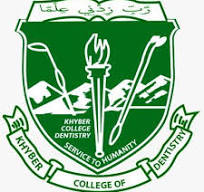COMPARATIVE ANALYSIS OF EXTRAORAL AND INTRAORAL APPROACHES IN MANDIBULAR ANGLE FRACTURE
DOI:
https://doi.org/10.33279/jkcd.v5i02.237Keywords:
Mandibular angle fracture, Maxillofacial trauma, Khyber College of DentistryAbstract
Objective: The purpose of the present investigation is to analyze outcomes of intraoral and extra oral approaches and to provide an evidence for the effectiveness of superior border fixation to mandibular angle fractures.
Material and Methods: This study was conducted in the Department of Oral and Maxillofacial Surgery Khyber College of Dentistry Peshawar, Pakistan. A total of 60 patients with displaced mandibular angle fracture were included in this study, where 30 patients were treated with intraoral while 30 were approached extraorally. Post-operative complications as well as total time spent in surgery and cost involved was analyzed using SPSS version 17.
Results: Out of 60 patients, 37(61.67%) were male while 23(38.33%) were female in their second and third decades of life (31.67% and 26.67% respectively). Among the intra-oral group, majority of the procedures (80%) were completed within 30 minutes while among the extra-oral group most of the procedure (93.34%) were completed in 30-60 minutes time. Fifteen cases were recorded among the extra-oral group while the remaining 3 cases (16.66% of the total complications) were recorded in Intra-oral group.
Conclusions: Intra-oral approach in the management of mandibular angle fracture is more desirable in terms of cost especially if intra-osseous wire is used instead of mini-plates. Other advantages are less operative time, fewer chances of infections and nerve damage as compared to extra-oral approach.
Downloads
Published
How to Cite
Issue
Section
License
Copyright (c) 2015 Basheer Rehman, Anam Iqbal, Hina Afsar, Qiam ud Din, Shuja Riaz Ansari

This work is licensed under a Creative Commons Attribution-NonCommercial-NoDerivatives 4.0 International License.
You are free to:
- Share — copy and redistribute the material in any medium or format
- Adapt — remix, transform, and build upon the material
- The licensor cannot revoke these freedoms as long as you follow the license terms.
Under the following terms:
- Attribution — You must give appropriate credit , provide a link to the license, and indicate if changes were made . You may do so in any reasonable manner, but not in any way that suggests the licensor endorses you or your use.
- NonCommercial — You may not use the material for commercial purposes .
- No additional restrictions — You may not apply legal terms or technological measures that legally restrict others from doing anything the license permits.










